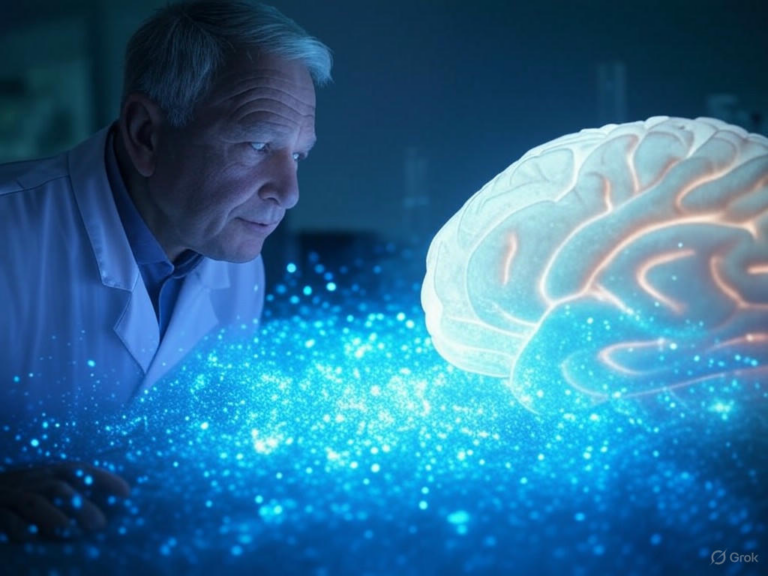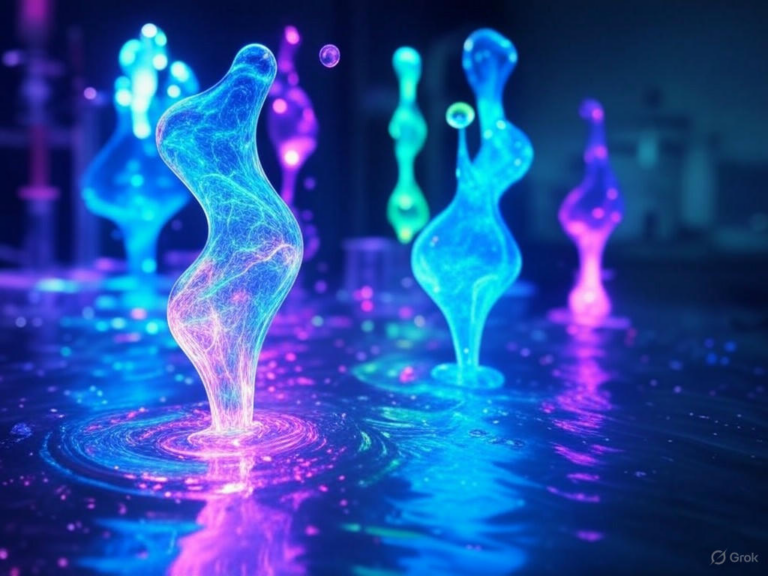
Quantum Gravity Theory Bridges Gravity and Standard Model
Exploring the Essentials of Quantum Gravity
Quantum gravity has long been the holy grail of physics, striving to merge the vast scales of general relativity with the intricate world of quantum mechanics. Imagine trying to explain the universe’s biggest secrets, like what happens at a black hole’s core, without this crucial link. The Standard Model does an impressive job handling electromagnetic, strong, and weak forces, but gravity slips through the cracks, sticking to Einstein’s classical framework.
This pursuit of quantum gravity isn’t just academic—it’s about piecing together a full picture of reality. For instance, near the universe’s birth or in extreme gravitational fields, both quantum effects and gravity dominate, creating puzzles we can’t solve yet. By weaving gravity into the quantum tapestry, we might finally address anomalies that have baffled scientists for decades.
Why Quantum Gravity Holds the Key to Cosmic Mysteries
Have you ever wondered what holds the universe together at its most fundamental level? Quantum gravity could provide those answers, tackling issues like the behavior of black holes and the Big Bang’s explosive start. It’s essential because without it, we’re left with gaping holes in our understanding of spacetime at the tiniest scales, known as the Planck scale.
- Black holes remain enigmatic, with quantum gravity potentially revealing what’s hidden behind their event horizons.
- Dark matter and dark energy, which make up most of the universe, might find explanations through this unified approach.
- A true quantum gravity theory could lead to a grand unified theory, connecting all forces in a seamless web.
Think about it: if we crack quantum gravity, we might unlock new technologies or insights into everything from particle physics to cosmology. It’s not just theoretical—it’s a step toward making sense of the cosmos in a way that feels more complete and intuitive.
The Clash: General Relativity Versus the Standard Model
Picture two giants of science butting heads: general relativity, which sees gravity as the bending of spacetime by mass, and the Standard Model, which treats forces through particle exchanges in a fixed backdrop. This incompatibility is the heart of the challenge in developing quantum gravity, as blending them leads to mathematical headaches like infinities that don’t add up.
For example, quantum gravity theories must resolve how spacetime, which general relativity views as smooth, behaves in the quantum realm where it’s anything but stable. These conflicts highlight why gravity has been the odd one out, but overcoming them could revolutionize our grasp of the universe’s fundamental rules.
The Graviton: Quantum Gravity’s Elusive Particle Messenger
What if gravity, like other forces, was carried by a particle? Enter the graviton, a hypothetical spin-2 particle that’s massless and incredibly weak, making it nearly impossible to detect. In the world of quantum gravity, this particle could be the bridge we’ve been missing, similar to how photons carry electromagnetism.
Despite its appeal, the graviton remains unspotted, even with advanced detectors. Yet, imagining its role sparks exciting questions: Could spotting it confirm quantum gravity theories? It’s a reminder that sometimes, the smallest pieces hold the biggest secrets of the universe.
Leading Approaches to Quantum Gravity Unification
Quantum gravity isn’t a single idea; it’s a collection of bold theories trying to unite gravity with quantum mechanics. From string theory to loop quantum gravity, each offers a unique path to this unification, addressing how forces might work together at the most basic level.
Diving into String Theory for Quantum Gravity
String theory flips the script by suggesting that the universe’s building blocks are tiny, vibrating strings rather than points. These strings, operating at the Planck length, could naturally incorporate quantum gravity by including the graviton as one of their vibration modes.
It promises a unified framework, even predicting extra dimensions we can’t yet observe. But here’s a thought: while string theory is elegant, testing it requires energies far beyond our current tech, leaving us to ponder what experimental breakthroughs might one day verify it.
- It unifies all forces, including gravity, in a single theory.
- Extra dimensions add layers to our reality, potentially explaining quantum gravity phenomena.
- The challenge? We need ways to test these ideas without accessing those extreme scales.
Loop Quantum Gravity: A Discrete Take on Quantum Gravity
If string theory expands the universe, loop quantum gravity breaks it down into discrete loops of spacetime. This approach quantizes space and time themselves, ditching the need for extra dimensions and focusing on a woven fabric at the quantum level.
It’s background-independent, meaning it doesn’t rely on a predefined spacetime, which aligns closely with general relativity’s spirit. For quantum gravity enthusiasts, this could mean resolving singularities like those in black holes, but linking it to the Standard Model particles remains a puzzle.
- Spacetime becomes a network of loops, with quantized areas and volumes.
- No extra dimensions required, keeping things grounded in observable physics.
- The big question: How does this mesh with everyday particles and forces?
Other Innovative Ideas for Quantum Gravity
Beyond the heavyweights, theories like causal dynamical triangulations build spacetime from basic geometric shapes, while emergent gravity posits that gravity arises from deeper quantum processes. These alternatives keep the quantum gravity field buzzing with possibilities.
Each one adds to the conversation, offering fresh angles on unification. If you’re curious, consider how these might evolve—could they lead to entirely new ways of viewing the universe?
Comparing Paths in Quantum Gravity
| Theory | Key Features | Challenges |
|---|---|---|
| String Theory | Unified framework with extra dimensions and gravitons as string modes | Predictions hard to test at current energy levels |
| Loop Quantum Gravity | Discrete spacetime without extra dimensions, emphasizing quantized geometry | Integration with Standard Model particles is unclear |
| Causal Dynamical Triangulations | Spacetime constructed from quantized building blocks | Limited connection to established quantum gravity models |
This comparison shows how each quantum gravity approach has strengths and hurdles. It’s like choosing tools for a complex puzzle—each fits differently but aims for the same big picture.
Quantum Gravity’s Impact on the Standard Model
Bridging quantum gravity with the Standard Model could transform physics, potentially unifying all four fundamental forces. This might explain mysteries like dark matter, offering clues to particles or forces we’ve yet to discover.
For instance, quantum gravity could clarify cosmic singularities, where current theories fail. If you’re into hypotheticals, imagine a world where this unification leads to new energy sources or advanced materials—what innovations might follow?
Prospects for Testing Quantum Gravity
Testing quantum gravity is tough, given the minuscule Planck scale, but we’re not giving up. Scientists are examining gravitational waves for any deviations from general relativity, which could hint at quantum effects.
Observations of black holes and neutron stars, or even the cosmic microwave background, might reveal quantum gravity signatures. Here’s a tip: keep an eye on upcoming missions like those from space telescopes—they could be game-changers in this quest.
Unresolved Frontiers in Quantum Gravity
Despite progress, quantum gravity still faces big unknowns. Does the graviton exist, and how could we detect it? What lies at a black hole’s center, and can quantum gravity explain the universe’s origin?
Questions like whether spacetime is continuous or discrete keep theorists up at night. It’s a reminder that science is an ongoing adventure—full of twists that challenge our assumptions.
Wrapping Up the Quantum Gravity Journey
In the end, quantum gravity represents our boldest attempt to unite gravity and the Standard Model, promising a deeper understanding of reality. While theories like string theory and loop quantum gravity offer promising paths, we’re still on the edge of discovery.
What are your thoughts on these cosmic puzzles? I’d love to hear your ideas in the comments below, or share this post if it sparked your curiosity. For more on physics wonders, check out our related articles on general relativity.
References
1. “Quantum Gravity” from Wikipedia: A comprehensive overview.
2. Stanford Encyclopedia of Philosophy entry on Quantum Gravity: In-depth philosophical analysis.
3. Space.com article: Explaining the basics.
4. Advanced Science News: What is Quantum Gravity?.
5. YouTube video by PBS Space Time: Quantum Gravity Explained.
Additional sources: Case Western Reserve University physics events and other educational videos.
quantum gravity, Standard Model, unification of forces, general relativity, string theory, loop quantum gravity, black holes, gravitons, quantum mechanics, dark matter







